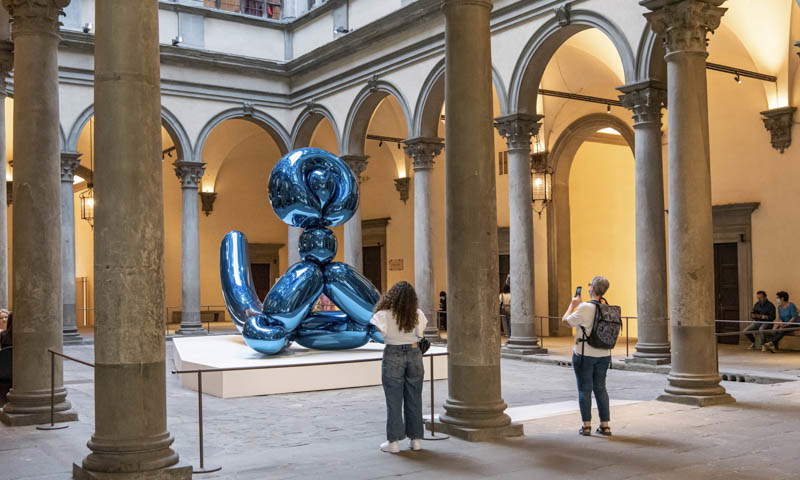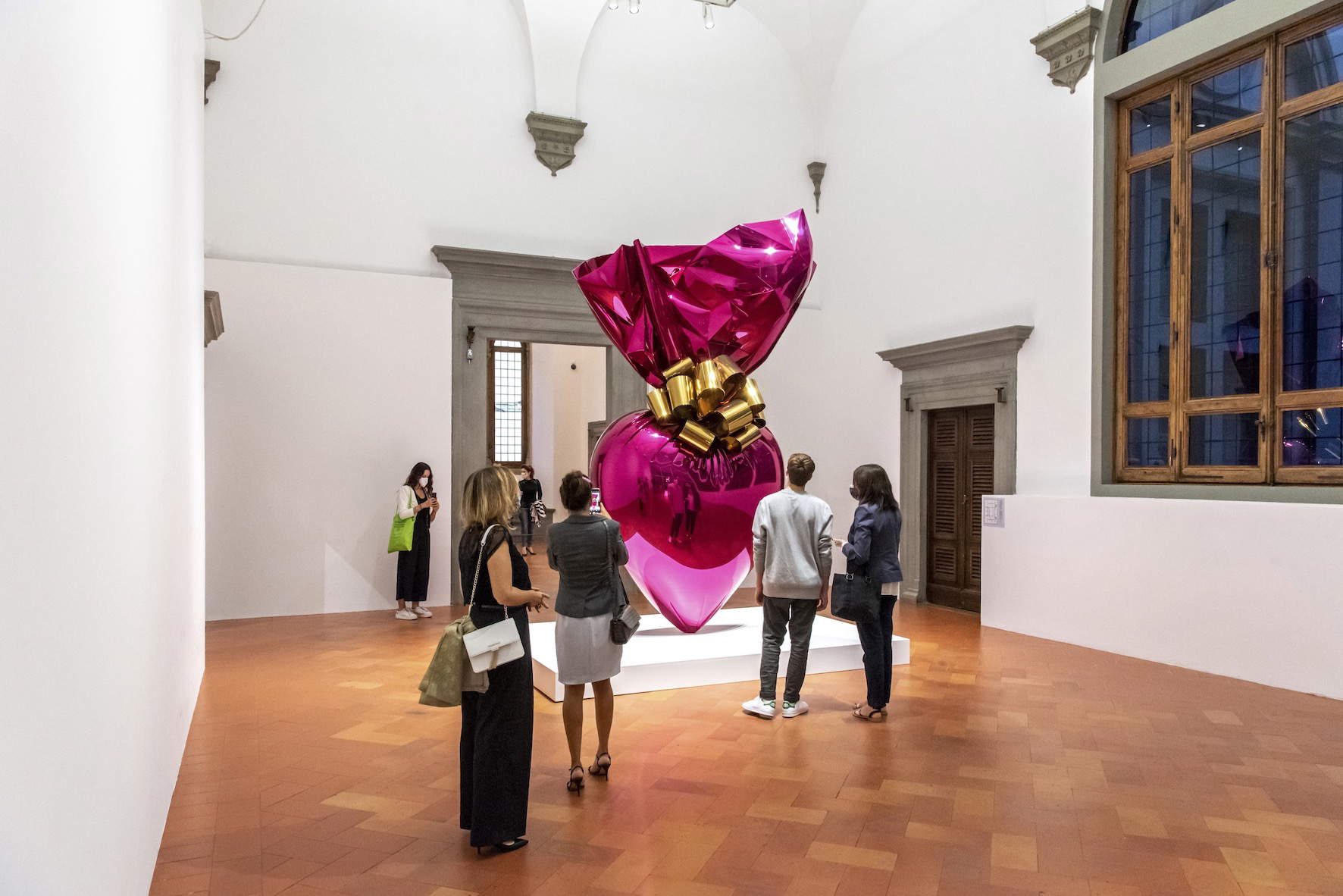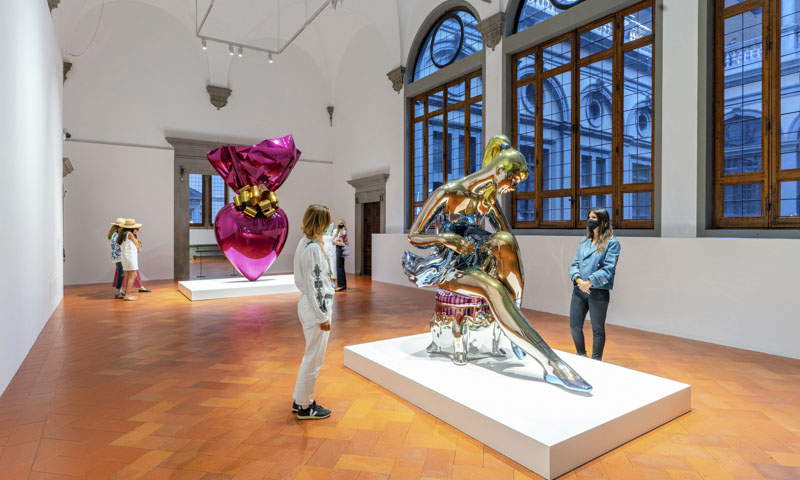“Aesthetics without ethics is cosmetics.”
Frank U. Laysiepen
One gets the impression that (much) of today’s art wants to establish itself as a champion of the people, a colorful banner guiding the people in the name of that individual freedom, licit to the artist as much as to the ordinary man. A picture already seen. The slow exit from the pandemic crisis, the first “global” one, has exasperated the urgency of consensus on the part of a type of art, the infamous “contemporary,” anchored, in its very definition, to immediate consumption, to the event as the paradigm of the object, thus an art thoughtful both in recovering the living presence of the masses, without whom it could not be, and (even!) in claiming an aura, a cultic value. The effectiveness of Delacroix’s image even in the present day makes it clear how the aforementioned urgency inevitably leads to the appropriation of solutions codified in the past, with no more anachronistic modesty; post-pandemic art has returned heroic, triumphant, even “democratic.”
The insistent critical juxtaposition of Jeff Koons with Marcel Duchamp, an approach “more political than aesthetic,” paraphrasing Cesare Brandi, is not accidental. It is precisely from the Jeff Koons - Shine exhibition currently underway in Florence at Palazzo Strozzi, curated by Arturo Galansino and Joachim Pissarro, that the food for thought comes regarding an artist and a system disregarding the prerogatives advocated toward the community, especially on the ethical and cultural level. One would be inclined to protest how much much (if not all) postmodern art overlooks the moral question by consciously expanding its solution to purely superficial enjoyment, to mere appearance, just like the glittering objects devised by Koons. This contrivance, however, cannot occur arbitrarily, ethics, and therefore aesthetics, cannot be triggered or nullified at will in the same formal pursuit: in essence, Jeff Koons falls into a semantic and logistical contradiction that critically erodes his work in the risk of moving from obscenus to obsoletus.



Jeffrey Koons was born in 1955 in York, a small county in the state of Pennsylvania, notorious in the news for pitiful racially motivated incidents(York Race Riots, 1969); the climate of tension did not seem to touch little Jeff’s childhood in the slightest, as he grew up in an affluent family encouraging the artistic tendencies of his eldest son, even cultivating a certain idea of elegance and prestige, given the Koons’ interior decorating business. He attended good art schools in Baltimore and Chicago, where he met Ed Paschke from whom Koons was introduced to a rawer, more underground culture of the American art scene.
Moving to New York in 1976, thanks to experiences at MoMA, in an administrative role, and as a broker on Wall Street, Jeff Koons acquired an entrepreneurial awareness that was decidedly unique for an artist, immediately managing to find adequate financing for his first exhibitions, which were certainly not frugal, though far from the monumental installations to which we are accustomed today. Ever since the vacuum cleaners of The New series and the basketballs of the Equilibrium series (first half of the 1980s), the repurposing of the Duchampian ready-made loses its subversive character to face a celebratory stasis, totally dispersive in fruition and desire, since it is no longer a matter of accessible objects, but only of their spectrum. Empty Simulacra. The idea of democratization through affluence and consumption is Koons’ creative point that “it is the viewer who creates the work” (Duchamp), bringing fruition to coincide with consumption. It aestheticizes the American Dream, in effect eliminating ethics, proposing art “at any cost.”
This forced coincidence, translates a “disposable” art and punctuates the temporal issue in Koons’ work: the object-art is not experienced, because it remains identical to its original prototype, it is not desired by the public, but by the collector.



The idea of “shine,” indeed a leitmotif of Palazzo Strozzi’s contemporary art exhibitions (from Michelangelo Pistoletto to Loris Cecchini to Tomas Saraceno), is a reminder, too, of Koons’s first intervention in Florence, when in 2015 his sculpture of Pluto and Proserpine, placed in Piazza della Signoria, was especially striking for the brazen gleam of its golden chrome plating, in stark contrast to the surrounding marble.
The critical stance was seesaw, mediating fan-like tones on those who, between sarcastic and truthful, even proposed leaving the sculpture forever, and those who just could not suffer it. It is precisely on critical ambiguity that Jeff Koons’s fortunes rest, for the valuation of his artifacts is purely arbitrary and almost never dwells on the object and contextual value of them, but often relies, quantitatively, on enumerating sales and costs incurred. Hollywood reasoning. Very few remember the plagiarism convictions(the last one by the French Court of Appeals beaten in spring 2021), far from framing the artist’s personality, but useful in scaling the relationship between the image of a work and the work itself. Koons is not a “creator” of images, he appropriates them by drawing from a reality that produces an exorbitant amount of them, contributing to an iconoclasm activated not by destruction but by exacerbation. All this is not illicit, but simply impunctual with the intentions of the artist and the Florentine exhibition: there is no inclusion, no transcendence in the refraction of the stainless steel toys, in the mammoth enameled porcelain and blown blue glass scattered around the main floor of Palazzo Strozzi, because everything is dissipated, leaving no trace. “And Koons is not regressive either. He is sluggish, you see him and forget him” (Baudrillard).
Without chronological rigor, the Shine exhibition has a mostly associative development, looking in each room of the building for a formal juxtaposition. Programmatically, there is no denying a great expenditure of resources and the ability to tune notable institutions of the international artistic elite, with loans from museums, foundations and prestigious collections. However, gathering to show off resembles more a display of luxury items than a cultural proposal, not to mention that the Palazzo Strozzi Foundation boasts 40 percent public funding and enjoys Art Bonus eligibility directly from the Ministry of Culture: the ministerial criteria, avowedly favoring stockholders, are further evidence of how the retrospective of the world’s highest-paid living artist (on May 15, 2019, his Rabbit, 1986, was fetched a record $91.1 million at Christie’s) is a eulogy to power, to its aesthetic opulence. To evoke the (alleged) desires of the masses or to call stainless steel a “proletarian” material is a purely misleading, mystifying boutade, apt to deprive forms and objects of an ethics of vision, excluding even the original source. Take Koons’ recent series named Gazing Ball: the blue blown-glass spheres, echoing, among other things, a habit of wealthy landowners who displayed these reflective spheres in their gardens, purely for decorative purposes, in Koons’ work act as distracting elements placed in front of reproductions of well-known modern paintings or juxtaposed on copies of classical statues. The effect caused is a hypnotic perceptual concentration toward the crystal, and a complete loss of artistic reception. Despite manifestations of simplicity, emblematic in recognizing himself in Popeye’s famous phrase, “I yam what I yam” (pun translatable to “I am what I am”), Jeff Koons is much closer to the Shakespearean Jago (“I am not what I am”), the exact opposite of what he declares. To assert that Baloon Dog, is a “Trojan horse” sounds like a disguised statement.
Warning: the translation into English of the original Italian article was created using automatic tools. We undertake to review all articles, but we do not guarantee the total absence of inaccuracies in the translation due to the program. You can find the original by clicking on the ITA button. If you find any mistake,please contact us.